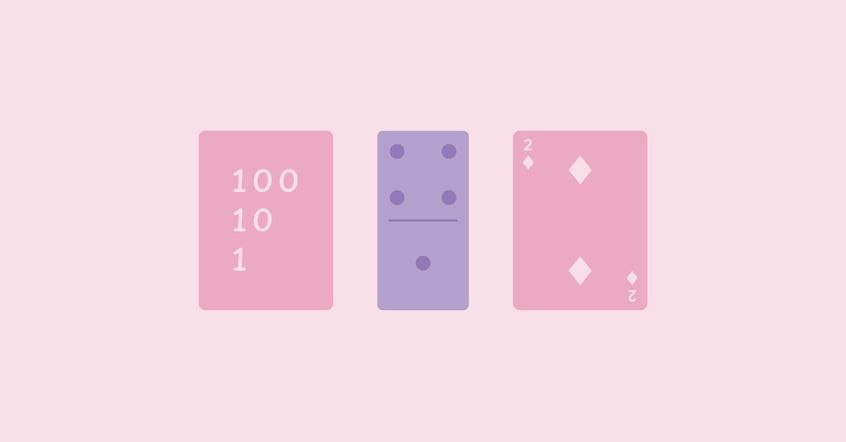Supporting dyslexia in the maths classroom
The conversation around dyslexia support often focuses on literacy — but learners with dyslexia can struggle with mathematics too. So how can you best support them in the maths classroom?
As you start a new academic year and get to know the learners in your class, it’s possible that you will have one, two, or maybe three children who show some signs of dyslexia or have a dyslexia diagnosis.
What are the challenges for learners with dyslexia in mathematics?
Dyslexia is a lifelong condition that affects the skills involved in accurate and fluent word reading and spelling. Learners with dyslexia usually have difficulty developing literacy skills and, in many cases, they also find mathematics tricky.
Between 60 and 90 percent of children with dyslexia have challenges with certain aspects of maths. It’s not surprising that if you have difficulties in deciphering written words, you’re also likely to have difficulty in learning the sets of facts, notation, and symbols used in mathematics.
Some of the particular challenges they face include:
- Grasping the underlying structure of the number system and understanding place value (often because of its abstract nature)
- Counting forwards and backwards
- Estimating and comparing numbers
- Recognising number patterns, even when represented visually
- Processing and memorising number bonds, multiplication tables and other sequences (often because of poor working memory)
- Recalling units of measurement and telling the time
- Using and understanding mathematical language
- Remembering mathematical procedures and rules or building on known facts (they may know that 5 + 3 = 8, but not realise that 3 + 5 = 8)
- Reading and processing mathematical word problems
- Reversing or transposing numbers (reading or writing 12 as 21)
How to support learners with dyslexia in the primary maths classroom
So what are the most effective ways of supporting dyslexic learners so they can achieve success in maths?
Many learners with dyslexia have strong visual and spatial reasoning skills. They tend to better understand maths concepts that are taught through manipulative or visual teaching strategies. Using lots of practical resources such as counters, bead strings, and multi-link cubes will be beneficial.
Using teaching strategies like place value cards and grids helps develop an understanding of the value of digits. Playing cards, dice, and dominoes can be used for a whole variety of number games and reinforce the learning of visual number patterns.
Learners could find it difficult to grasp the significance of number patterns within a completed 100 square or understand the interval-based structure of a number line. Spending more time on using the concrete versions of number representations can help.
How the CPA approach can support learners with dyslexia
If you use a Concrete, Pictorial, Abstract approach (CPA), it’s important to remember that some learners with dyslexia may benefit from spending longer on the concrete and pictorial stages before, or alongside, abstract representations. This helps secure their conceptual understanding.
To support counting, provide opportunities for learners to count objects frequently — manipulating and moving them as they count rhythmically.
Where possible, try linking maths to real-life contexts that are practical and meaningful for the learner. For instance, paying for shopping when teaching money. When introducing shapes, relate them to real objects — we all remember that a Toblerone is a triangular prism!
How to teach new mathematical vocabulary
Remember that maths has a language of its own and learning new mathematical vocabulary can be a challenge. Words like difference, multiply, and divide can be confusing as they mean different things in a maths context.
Try pre-teaching new mathematical vocabulary so learners are familiar with it prior to the lesson. Give visual support for the vocabulary with a maths words mat or list.
You can also include mathematical symbols alongside the words to reinforce the pictorial representation. Teaching an older child the root meanings of some maths words can support their understanding (e.g. tri = 3).
When to support the working memory of learners with dyslexia
Many learners with dyslexia will have poor working memory and may find processing and memorizing facts such as times tables tricky. Try to minimise the number of facts your learner needs to know by heart and let them jot down their thoughts and observations to support mental calculations.
During a lesson, you can teach a variety of methods for calculation and give your learner the opportunity to decide which method is most suitable for them.
When developing word problems, it’s helpful to use clear, unambiguous language and keep unnecessary information to a minimum to reduce cognitive load. Try representing the problem in images or ask an adult or peer to read the problem to them.
Of course, it’s important to remember that each learner with dyslexic difficulties is unique and different approaches will work for different children. Even so, trying out these teaching strategies will be a good starting point for supporting them in the primary maths classroom.
Did you know, the 7–13 October is Dyslexia Awareness Week? Share this post on social media using #dyslexiaawarenessweek or find out more at British Dyslexia Association.
